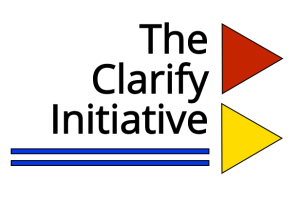Introduction
We are surrounded by media, advertising, and political messaging everywhere – in social media posts, texts, videos, TV commercials, podcasts, news programs, e-mails, print flyers and posters, newspapers, and magazines. To inform, sell to, persuade, and motivate us, the authors and sponsors of these messages and stories use the power of language, choosing to word their message in particular ways. Behind their messages lie particular worldviews, discourses, and ideologies that may or may not align with those of the audience. In making certain word and grammatical choices, they show us their perspective and invite us to share in it. To do this, these authors may use rhetorical or language power techniques like metaphor, euphemism, hyperbole, address forms, weasel language, and epithets. These can be enacted with particular grammatical features; for example, an epithet may use a noun phrase, hyperbole a superlative adjective, or weasel language a passive form. We need critical language awareness to see these connections.

While many everyday interactions involve some exercise of power, many media, advertising, and political messages do as well, even though they might seem benign. Although we usually know that we should be a little skeptical of advertising for consumer products, we also need to be aware of propaganda, biased information meant to promote a particular point of view, and disinformation, deliberately false information meant to mislead, in political and other media discourse. Propaganda and disinformation is spread through media, including social media like Twitter, Facebook, and Instagram, sometimes in ways that are not obvious.
In free democratic societies all citizens participate in governance by voting, and in liberal democracies, voting and freedom of expression are fundamental rights. However, some individuals and groups may feel that having social and economic capital — fame and money — entitles them to have a greater say in government policy than those with less capital; it is no surprise that these people often find their ways to positions of political and corporate power, and that they try to promote their ideologies to this end, sometimes using propaganda and disinformation to do so. They may use propaganda techniques and logical fallacies, take advantage of cognitive biases, appeal to emotions like fear, pride, and desire, selectively misrepresent their intentions, or simply lie. As the classical Athenians argued, participants in a democratic society need the skills of rhetoric, grammar, and logic to see through to their intentions and evaluate them clearly. Without this criticality, democracy doesn’t work.
What kinds of propaganda are there?
Try this activity and browse the website to learn more.
https://propagandacritic.com/index.php/how-to-decode-propaganda/what-is-propaganda-analysis/
Developing critical language awareness
Just because the messaging around us may contain bias or disinformation does not mean that we should never trust media sources. Depending on who owns or controls them, some media are more biased than others, and many journalists try very hard to be unbiased and present the objective truth. However, ultimately it is the job of readers or listeners to identify when various power techniques are being used, and whether they are being told the truth. There are several reputable websites for fact-checking like Politifact, Snopes, or Factcheck that can be referenced before believing or spreading anything remotely questionable. When consuming and sharing media-based information, it’s also good practice to be highly skeptical of conspiracy theories, to be aware of your own confirmation bias and to recognize when you are in an echo chamber — this awareness may help you from spreading misinformation. It’s also smart to read your news rather than only viewing or listening to it, because this allows you enough time to stop and re-read, to analyze the language, and to question how, who, and why the message is being presented as it is.
| If you have time and interest, learn more about media biases and fact checking websites here: |
To recognize when these techniques and appeals are being used and to combat their effects, it can be useful to focus on the exact words that are said, written, or shared. An analytical approach called critical discourse analysis is ideal for this task because it examines language in use and connects the lexicogrammar and the context of what is said, that is, the how, who, where, when, and why, not just the what. A critical discourse analyst might look at the news headline, “Factory rioters arrested,” and question the choice of the term ‘rioters’ and the use of the passive voice, instead of the possible active voice equivalent, “Police arrested union protestors”. They might consider that this headline was in a conservative blog report and conclude that the report thus shows an anti-union bias. By understanding the power technique of weasel language and how the passive voice can be used to mask agency or responsibility, the analyst can show objective evidence for the bias of the report.
About this resource
The development and production of this open educational resource has been made possible by a generous donation to the Clarify Initiative, a project led by Prof. Jonathon Reinhardt at the University of Arizona Department of English. Fully funded by the donation, this resource is publicly available through the university’s open textbook website.
About the authors
Jonathon Reinhardt is a Professor of English Applied Linguistics and Second Language Acquisition at the University of Arizona. He teaches grammar and courses in teaching English to speakers of other languages. https://english.arizona.edu/people/jonathon-s-reinhardt
Anuj Gupta is a Phd student in the Rhetoric & Composition program at the University of Arizona. His work focuses on UI/UX research, instructional design, accessibility, emotions in teaching and learning, computational social science and digital humanities. https://www.linkedin.com/in/anuj-gupta-3533541a1/
Robert Poole is an Assistant Professor of TESOL and Applied Linguistics at the University of Alabama. He is an applied corpus linguist and teaches various courses in the MA-TESOL program at his university. https://english.ua.edu/people/robert-poole/
Dilara Avci is an MA student in Teaching English as a Second Language at the University of Arizona. Her research interests are second language writing and materials development with a focus on digital literacies and critical pedagogy. https://www.linkedin.com/in/dilara-tunali-avci-647180b3
Module authors: Jonathon Reinhardt & Robert Poole
Last updated: 7 January 2025
This module is part of Critical Language Awareness: Language Power Techniques and English Grammar, an open educational resource offered by the Clarify Initiative, a privately funded project with the goal of raising critical language awareness and media literacy among students of language and throughout society.


the public discussion including texts -- print and spoken -- that surround a particular topic
systems of ideas and ideals about how the world is and how it should be, e.g. liberalism, conservatism, socialism, capitalism, colonialism, etc.
a technique of using language to persuade, convince or otherwise influence the listener, reader, or interlocutor (audience)
a feature of grammar such as parts of speech or syntactic functions
critical understanding of the social, political, and ideological aspects of language, linguistic variation, and discourse
Information that deliberately promotes a particular perspective, regardless of its veracity.
Information that is purposefully false and meant to mislead or deceive, sometimes equated with propaganda. Recently it's been called "fake news".
Confirmation bias is the tendency to search for, interpret, favor, and recall information in a way that confirms or supports one's prior beliefs or values: https://en.wikipedia.org/wiki/Confirmation_bias
an echo chamber is a situation in which beliefs are amplified or reinforced by communication and repetition inside a closed system and are insulated from rebuttal. https://en.wikipedia.org/wiki/Echo_chamber_(media)
critical examination of language use as texts or discourse (at levels higher than a sentence), often in consideration of social context
the vocabulary (lexicon) and the grammar of a language seen as interconnected and interdependent
a form of language use where an object becomes the new subject and the original subject and its agency is deemphasized or omitted
a form of language use where the subject is the agent
language that allows the speaker or writer to be vague, to generalize, and to hide or mask authority on purpose

